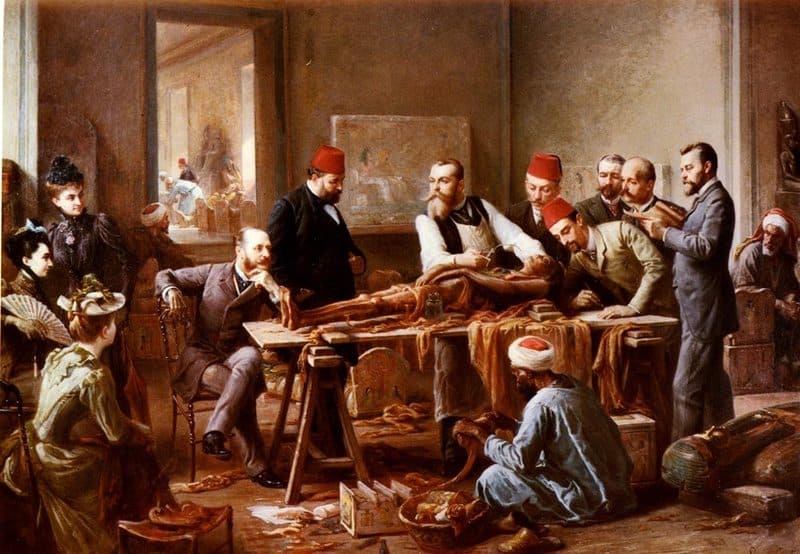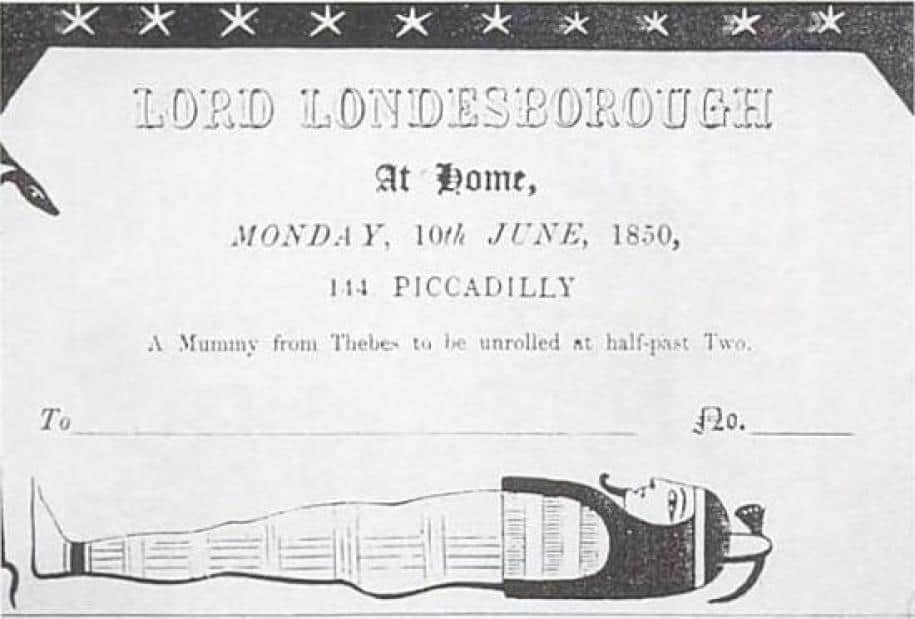For a long time, Europeans were fascinated with mummies. They were so enthralled by them that rich Europeans would go out of their way to do some really weird things with them. It was not unheard of to buy mummies to unwrap them either publicly or at a private unwrapping party. Mummies would often end up in “cabinet of curiosities” beside something like a “mermaid’s hand”, a whale bone and other odd purchases.
Mummies get their name from “mumiya” an Arabic word that refers to “pissasphalt“, a natural substance that was used in Islamic medicine for generations. During the crusades, Europeans were introduced to mumiya (pissasphalt) as a medicine and soon it was being shipped all over Europe and used as a kind of cure-all.
Bitumen, which looks a lot like pissasphalt, was used in the ancient Egyptian mummification process and began to be called “mumia” as well.
But somewhere along the line, people became confused, and began to think that the term “mumiya” was referring to real mummies. Which then began the practice of basically buying mummies, grinding them up into powder, and mixing them with something like honey to swallow or spread on a wound to cure every illness and disease you can think of. Different parts of the mummy were thought to cure different diseases—if you wanted to cure a skin disease, you would grind the skin of a mummy and ingest that, whereas mummy skull was better for headaches. Mumia fell out of favour as medicine in the 18th century, once people began to understand that it didn’t actually do anything, but you could still buy mumia in a medicinal catalogue as late as 1924.
If you’re an artist, you probably know mumia for a different reason. When Europeans weren’t grinding up mummies to swallow them like vitamins, they were mixing them with chemicals to create a paint called Mummy Brown. Mummy Brown had a sort of transparency so it was used often to show tinted glass or shadows in pre-Raphaelite paintings. Mummy Brown, made with real mummies, could easily be purchased until the 1930s.
What finally stopped Europeans doing weird things with mummies? Firstly, common sense was invented, and people figured out that eating mummies and using them as paint is not very effective and actually really gross. At the same time, the mummy trade was drying up. It was getting harder and harder to buy a mummy as people began to understand their cultural and archaeological value. Lastly, it turns out that mummies are not a renewable resource, and we were running out of honest-to-goodness mummies. I personally cannot wait until some nice school-child asks me “why aren’t there mummies anymore?” And I will look them square in the eye and tell them “because we ate them.” And I won’t even be wrong.
Want more to learn more? We covered mummies and their curses in Episode 26 of our Haunted Talks Podcast.
Be sure to join us on our new BUBBLE GHOST TOURS in Kingston, Ottawa & Toronto. A safe and fun way to get some fresh air and enjoy some great ghost stories.
Jill Sullivan
Tour Guide
The Haunted Walk of Toronto



